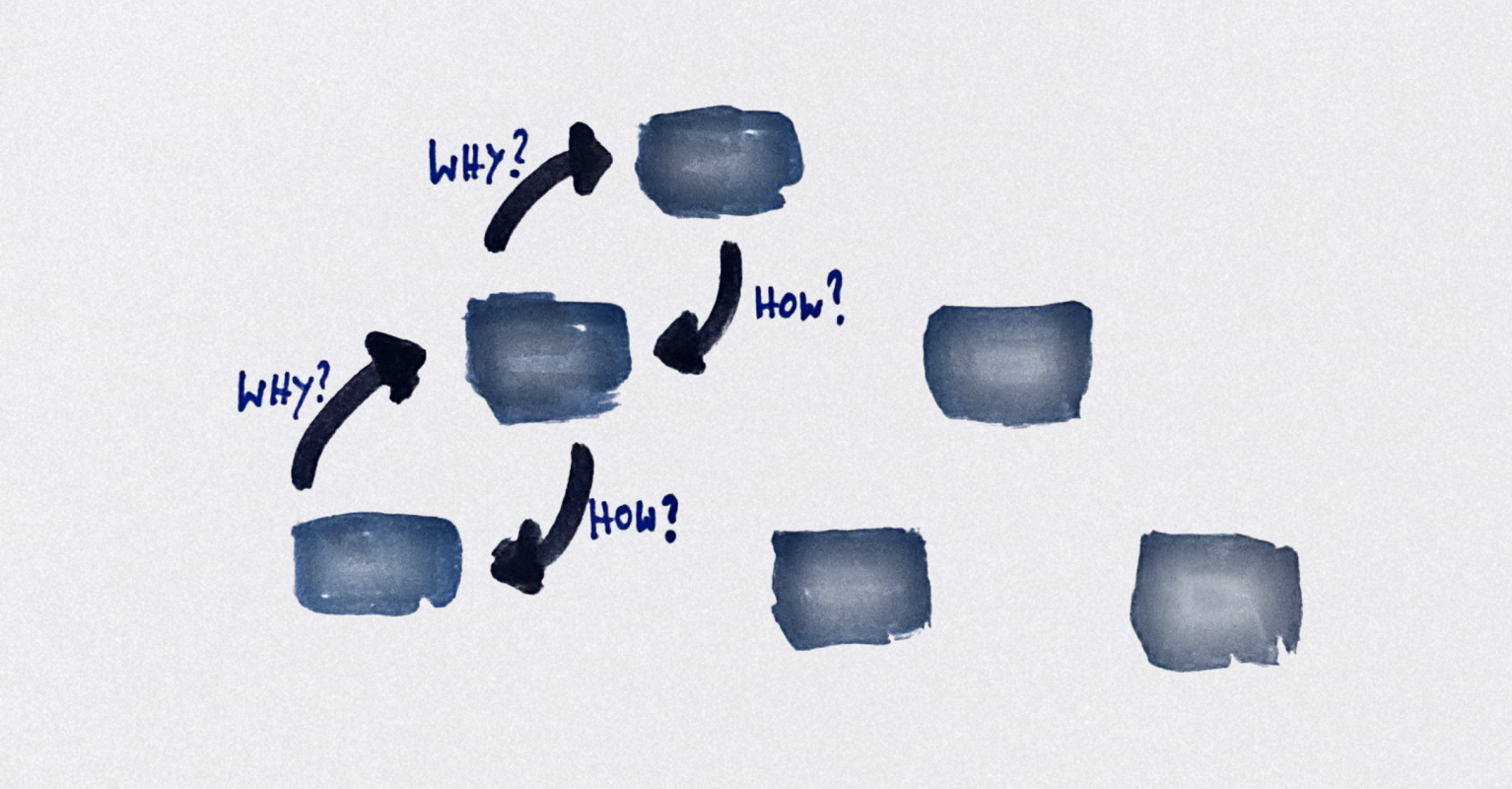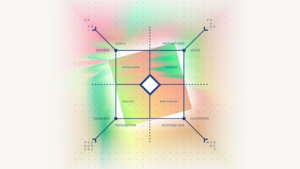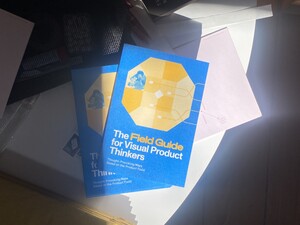Why/How Laddering — How the Product Field Tells You When To Use It

At Field, we are currently working on Method Advice, a new feature that provides contextual method advice based on the results from the Product Field sense-making process.
Every suggested method will be featured with a how-to guide so even inexperienced product teams can make use of them effectively. To demonstrate the hands-on nature of these method instructions, this post is meant to serve as an example. It offers a slightly abridged version of the guide Field provides to instruct the use of Why/How Laddering. And in case you're interested in further such examples, there are two more on this blog. One describes the Stakeholder Map, another is a guide to the Kano Model.
Why/How Laddering
Why/How Laddering is a way of reframing a problem or challenge by complementing its initial statement with more abstract and more concrete statements. Moving up the ladder expands the scope and helps see larger patterns and deeper needs, moving down helps find different concrete solutions.
Result
- A hierarchy of interconnected challenges or problem statements
- Context for the original challenge or problem statement
- An understanding of wider challenges and deeper needs
- Alternative points of departure for developing concrete solutions
Relationship to the Product Field
Use Why/How Laddering whenever you want to map and understand a problem, challenge, goal or motivation on a deeper level (why someone has it) or find concrete, alternative solutions for it (how to solve it). Therefore it’s most helpful in the Goals, Motivations, Problem and Solution areas.

Source
Why/How Laddering, also known as Abstraction Laddering, was originally developed by Sidney J. Parnes at the International Center for Studies in Creativity at Buffalo State College in the 1950–60s as part of the so-called Creative Problem Solving Process.
Parnes’s colleague Min Basadur further developed the method into what he called Challenge Mapping or “Why-what’s stopping” analysis since the mid-1970s, culminating in his 1994 paper “A New Methodology for Formulating Ill-structured Problems”.
From there the method got adopted in Design Thinking, mostly under the title of Why/How or How/Why Laddering.
Description
Why/How Laddering helps you see larger patterns and overarching questions by moving up in abstraction, and find innovative solutions to your problem by moving down on alternative paths.
You can use it alone, but it’s more effective in a group of 3–6 people who bring different perspectives. Use a physical or virtual whiteboard and sticky notes and do the following steps:

Step 1
Write down your initial problem statement or challenge on a sticky note and put it at the centre of the whiteboard.
Step 2
Move up the ladder by asking “why?”. Do this repeatedly and write down the answers onto sticky notes as new, broader statements. Place each of them on the board above the initial statement, according to its level of abstraction. At a certain point, you’ll reach a very common, abstract need such as “health” or “happiness“. This is the top of the ladder. This process helps you frame the initial problem differently.
Step 3
Move down the ladder by asking “how?”. Start with different sticky notes and explore alternatives, writing down the answers as new, narrower statements. Place them on the board above, at the level of or below the initial statement, according to their level of abstraction. This helps you identify alternative ways to fulfil the needs behind the initial problem, and find points of departure for concrete solutions.
Step 4
Scan the emerging map of statements for patterns that can further inform your ideation, e.g. parallel ladders representing different causal mechanisms, different and potentially competing ultimate goals at the top, or differences in detail between different areas of the map, which point to differences in knowledge about these areas.
Learn More
Now that you have learned about workings of Why/How Laddering, and how Field presents method instructions, you might be interested in how Field actually helps teams get to a shared understanding of their situation. How Field helps them facilitate the sense-making process that leads to the contextual method advice.

Start your customized Field trial with one of our product coaches or schedule a personal demo session.




